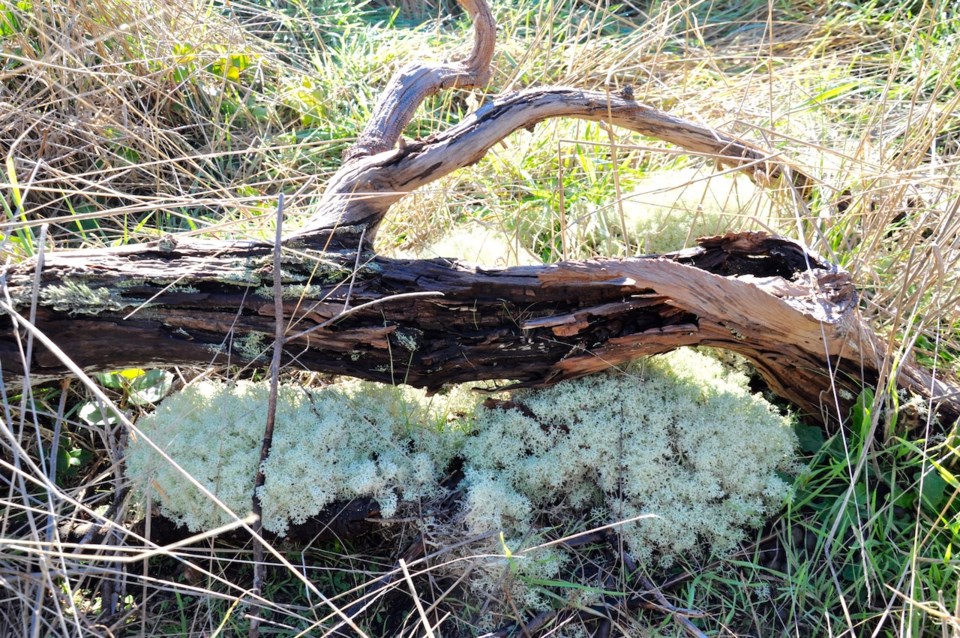Bowen Island Conservancy board volunteers were thrilled recently to receive confirmation that the land purchased at Cape Roger Curtis is an ecological “jewel of Howe Sound.” In spite of the three driveways and clearings for three houses, it retains a wild community of rare and threatened plants, animals, and ecosystems, states a recent rare plants assessment.
The baseline study indicates that the coastal bluffs have high ecological value, marking this as “the best example of this type of ecology in the Lower Mainland area.” There are rare, threatened and endangered ecosystems that make up the entire property with at least seven “at risk” animal species as well as diverse invertebrates who live in the trees, beneath the trees, in mosses, between the rocks, in tide pools, and along the shores.
Plants that normally are found on southern Gulf Islands are also here, and unique in the region. Even without a full assessment of plant and animal species, it is already clear that this conservation area is important in terms of biodiversity at a provincial level.
“The conservation area will be a living museum,” says board member Bob Turner. “A place to learn about plant, animal and insect species, impacts of climate change, in addition to so many other elements that factor into the web of life in a forest, along the shores, on the rocky headland and even in the water.”
At a glance the value of the biodiversity in the area might not be immediately appreciated. There are tiny plants, for instance, that sprout up in the spring, disappearing quickly from view but critical in holding onto valuable moisture in the soil, and preventing the erosion of topsoil that sits atop a rocky headland. This supports the existence of other fragile but important species, invertebrates, and larger creatures. There is a delicate web of life that occurs on the headlands, but in the forest too, where wet soil is easily compacted by footsteps. Trampling removes oxygen from the soil, which makes it less hospitable to plants that hold the soil in place, or kills them altogether. This allows for soil erosion and loss of both plant and animal species. It’s easy to underestimate how important the small life forms can be within a bigger picture, or to appreciate how much long-term damage can be done by footsteps.
Luckily, the report indicates that some of the forest ecosystems are less sensitive to some foot traffic, allowing for an interpretive trail system through those areas once enough baseline research is completed.
The report goes on to say “since the ecosystems of the Cape are only found in a small zone of the Pacific Northwest of North America and nowhere else in the world, the rarity of these systems can also be considered on a global level.“
Even from the roadside, you get a sense of what has been saved. The area is home to the elders, the trees that are two to three-hundred-years-old. Further along, amongst these elders, there are the old growth trees, some of them stunted, hiding their age behind their slow growing strategy.
The chunky southern shore, battered by winds and waves and baked in the sun is where some of the most precious species, like the Seaside Junipers, take hold. The Seaside Junipers were once believed to be rare Rocky Mountain Junipers but were then identified as even less common.
On the bluffs are junipers and fragile reindeer lichen that slowly creep in an ethereal cloud across the rock, with no capacity to ward off the impact of dog paws and boots that rip it from its fragile hold or crush the smaller, more fragile and short-lived species.
Inland, there is craggy rock, ravines, and a mix of trees, vines, reeds, flowers and shrubs. Arching fountains of tall ferns grow along nurse logs covered in a velvety moss, and frogs, salamanders, birds, bats and banana slugs find nourishment in what remains a refuge for the wild creatures of the forest.
Altogether, this unusual chunk of land and shore has a value that is inestimable in terms of the rich genetic bank of flora and fauna. The ecological value also provides value for society on a psychological level. Where there is a deluge of news about dying oceans, logged old growth, and a growing number of species at the brink of extinction, here there is a rare “win” for the environment that all may enjoy. There is hope for regeneration, survival of the wild, and the potential for gratifying hands-on experience in restoration and learning and exploration.
“This isn’t a park; this is our community’s legacy, one that will endure for generations,” says Turner.



